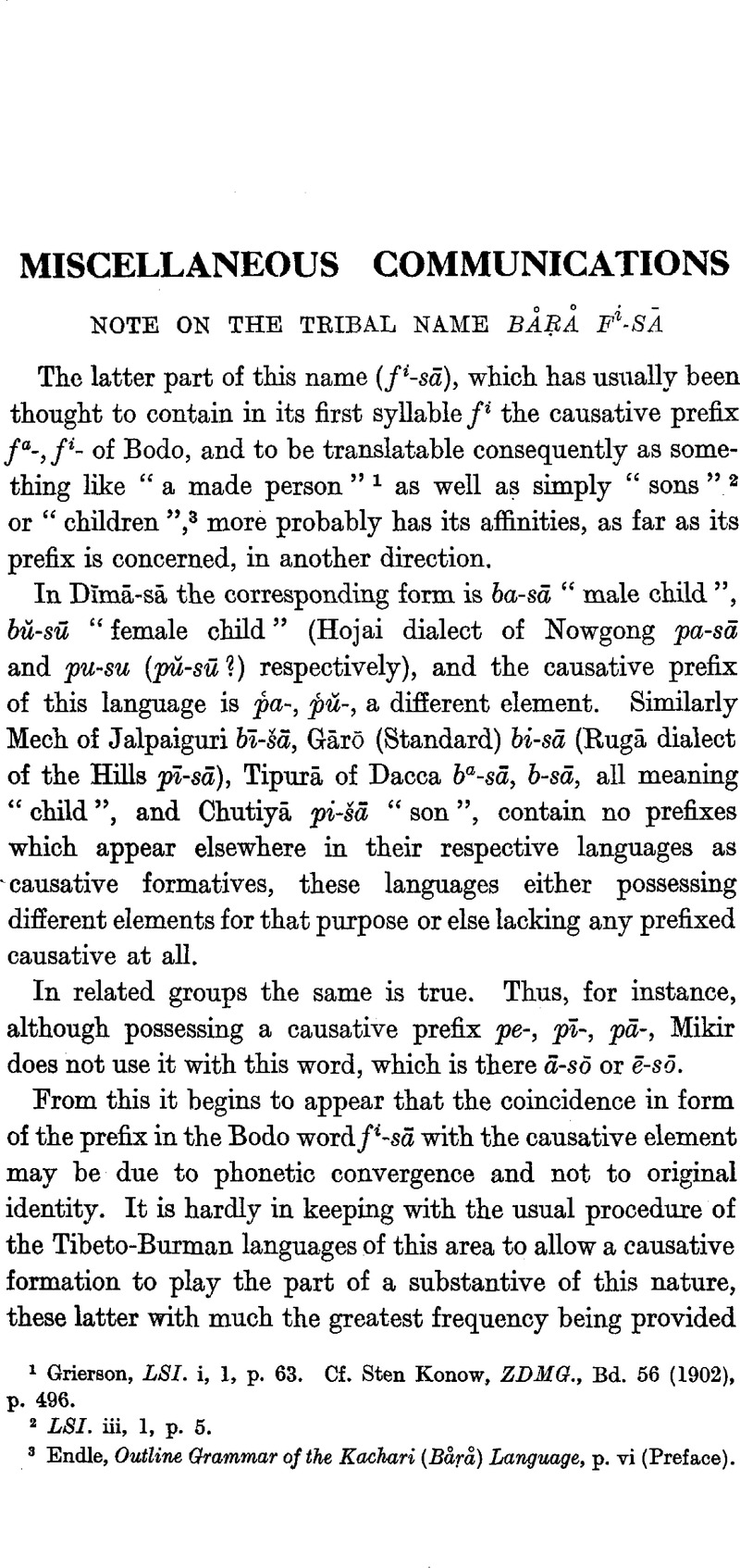No CrossRef data available.
Article contents
Note on the Tribal Name Båṛå Fi-sā
Published online by Cambridge University Press: 15 March 2011
Abstract

- Type
- Miscellaneous Communications
- Information
- Copyright
- Copyright © The Royal Asiatic Society 1929
References
page 581 note 1 Grierson, , LSI. i, 1, p. 63Google Scholar. Cf. Konow, Sten, ZDMG., Bd. 56 (1902), p. 496Google Scholar.
page 581 note 2 LSI. iii, 1, p. 5.
page 581 note 3 Endle, , Outline Grammar of the Kachari (Båṛå) Language, p. vi (Preface)Google Scholar.
page 582 note 1 This form and its immediate Tibetan cognates the writer has considered on a previous occasion. See Language: Journal of the Linguistic Society of America, vol. iv (1928), p. 279Google Scholar.
page 582 note 2 Bailey's, bŭtsha; Linguistic Studies from the Himalayas, Asiatic Society Monographs, xviii (1920), p. 42Google Scholar.
page 582 note 3 As, for instance, between the dialects of Dīmā-sā in the Hills and in the Plains. See Dundas, Outline Grammar and Dictionary of the Kachari (Dimasa) Language, Vocabulary passim.
page 582 note 4 In ẖbig(s)-pa, perf. ῥigs, fut. dbig, imp. ῥig(s) and ẖbug(s)-pa, perf. ῥug, fut. dbug, imp. ῥug “to sting, to pierce, to bore”; šib-pa and šub-pa, perf. and imp. šubs “to whisper”; ẖbub(s)-pa and ẖbub(s)-pa, perf. and imp. ῥub(s), fut. dbub “to put on a roof”; dbyig-pa and dbyug-pa “stick”; and others.


